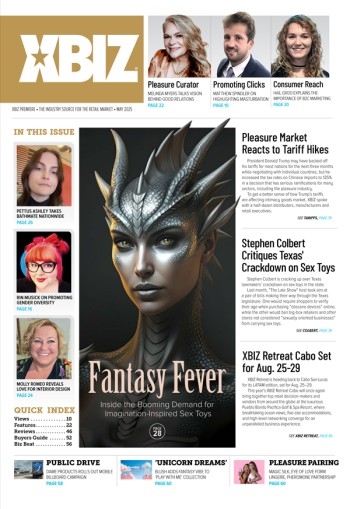Sellers need to understand their customers. The deeper that understanding, the more they can build trust and loyalty, which leads to repeat business and long-term relationships.
Knowing your customers allows you to tailor product development to cater to their specific needs, reducing the risk of product failures. Marketing and advertising efforts can be more targeted and practical when you know your audience, ensuring the message resonates and leads to higher conversion rates. Resource allocation can be optimized by concentrating on the most effective strategies and channels for your specific customer base. Understanding current customers and their evolving needs can help sellers anticipate market trends and stay ahead of the competition. Finally, sellers can provide better service and support by anticipating customer issues, preferences and expectations, enhancing customer satisfaction and positive word of mouth.
Part of understanding customers is understanding their path from initial point of contact through engagement, purchase and post-purchase interactions.
Identifying Target Markets and Audiences
The modern marketplace is flooded with products and services, and consumers have many choices. To stand out and connect with potential buyers, sellers need to enhance their understanding of their customers via concepts like target market, target audience and audience profile.
Target Market: By identifying a target market, sellers can ensure that their product or service is relevant to a particular group, making the offering more attractive to potential buyers within that segment. Understanding the broad group most likely to buy a product allows for developing strategies tailored to that segment, leading to better outcomes in sales and marketing efforts.
Target Audience: While the target market is broader, identifying a target audience hones in on a more specific subset. This precision ensures that marketing messages and campaigns are even more refined, directly addressing the individuals most likely to respond. Knowing the target audience helps sellers select the most effective communication channels and platforms, ensuring marketing efforts reach the right people.
Audience Profile: A detailed audience profile allows sellers to personalize their sales and marketing strategies to an individual level. This personal touch can significantly enhance engagement and conversion rates. By humanizing the audience, sellers can develop messages that evoke emotions, create a connection, build trust, and strengthen the brand and consumer relationship. A detailed audience profile can be a tool for continuous improvement. Sellers can gather feedback from the intended customer and refine their strategies for even better results.
Market Segmentation
Market segmentation divides a broad market into subgroups based on specific characteristics of consumers or businesses. Businesses use these segments to tailor their marketing strategies and product offerings to target and satisfy specific groups of customers more effectively. Here are the four main types of market segmentation, each with examples relevant to a sexual wellness brand.
Demographic Segmentation. This is a standard segmentation method based on age, gender, family size, income, occupation, education, religion, race and nationality.
- Target Market Example: Women ages 25-35 with a college education and an average-to-above-average income level.
- Target Audience Example: Single women ages 28-32 who are professionals in the corporate sector.
- Audience Profile Example: Jessica is 29, female, with a Master’s in Business Administration. She works as a middle manager at a multinational corporation, and her income level is above average.
Geographic Segmentation: This divides the market based on geographical boundaries such as nations, states, regions, cities or neighborhoods.
- Target Market Example: Urban and suburban areas in progressive cities where conversations about sexual wellness are more open and prevalent.
- Target Audience Example: Those living in major metropolitan areas on the east coast of the U.S., where the brand plans to launch its initial campaign.
- Audience Profile Example: Lives in a high-rise apartment in downtown Boston, Massachusetts.
Psychographic Segmentation: Dividing the market based on social class, lifestyle or personality characteristics is about understanding consumers’ wants and intrinsic behaviors.
- Target Market Example: Women who value self-care, prioritize their well-being, are open-minded and actively seek out products or information related to their sexual health and happiness.
- Target Audience Example: Those living in major metropolitan areas on the east coast of the U.S., where the brand plans to launch its initial campaign. Women who actively participate in feminist and empowerment movements, prioritize their well-being and are inclined to invest in high-quality sexual wellness products.
- Audience Profile Example: She enjoys yoga, reads self-help and feminist literature, attends women empowerment seminars, values quality “me” time and often indulges in spa treatments. Believes in equality and actively advocates for women’s rights. Prioritizes personal wellness and self-care.
Behavioral Segmentation: This focuses on understanding the consumer’s behavior, such as their knowledge of, use of or response to a product.
- Target Market Example: Women who regularly purchase wellness and self-care products, engage with health and wellness content online, and are responsive to influencer recommendations or reviews.
- Target Audience Example: Women who have previously purchased or shown interest in luxury wellness items, subscribe to health and wellness magazines or digital channels, and often share or engage with sexual wellness content on social media platforms.
- Audience Profile Example: Usually buys luxury skincare and wellness products, subscribes to wellness magazines and is a member of a monthly book club. She actively engages with wellness influencers on Instagram, frequently searches for organic wellness products and leaves reviews on products she loves.
Journey Mapping
Part of understanding customers is understanding their path from initial point of contact through engagement, purchase and post-purchase interactions. Customer journey mapping is a visual representation of this path, and it can offer invaluable insights into touch points, emotions and possible pain points a customer might experience. By integrating target market, target audience and audience profile data into the journey map, companies can create a powerful tool that offers a holistic view of the customer’s interaction with the brand.
Reaping the Benefits
There is almost no end to the benefits of good customer intelligence. When businesses conduct thorough research to identify and understand their customers, they can then tailor products and content to address the audience’s specific needs, challenges and interests; develop marketing and advertising campaigns that resonate with the characteristics and behaviors of this group; monitor and measure the effectiveness of those campaigns; choose advertising channels and platforms where customers are most active; gather feedback and adjust strategies as the target market’s preferences and behaviors evolve.
Knowing your customers is pivotal to successful selling in today’s competitive marketplace. Hopefully the tools above will help demystify that process, and help you leverage customer intelligence in effective ways that connect you with your audience and boost your business.
Joe Powell is a graphic designer, brand creator and B2B and B2C marketing professional. For over 25 years, he has held remote contract roles in which he specializes in best-practice tactics for visual/brand identity and product development.








